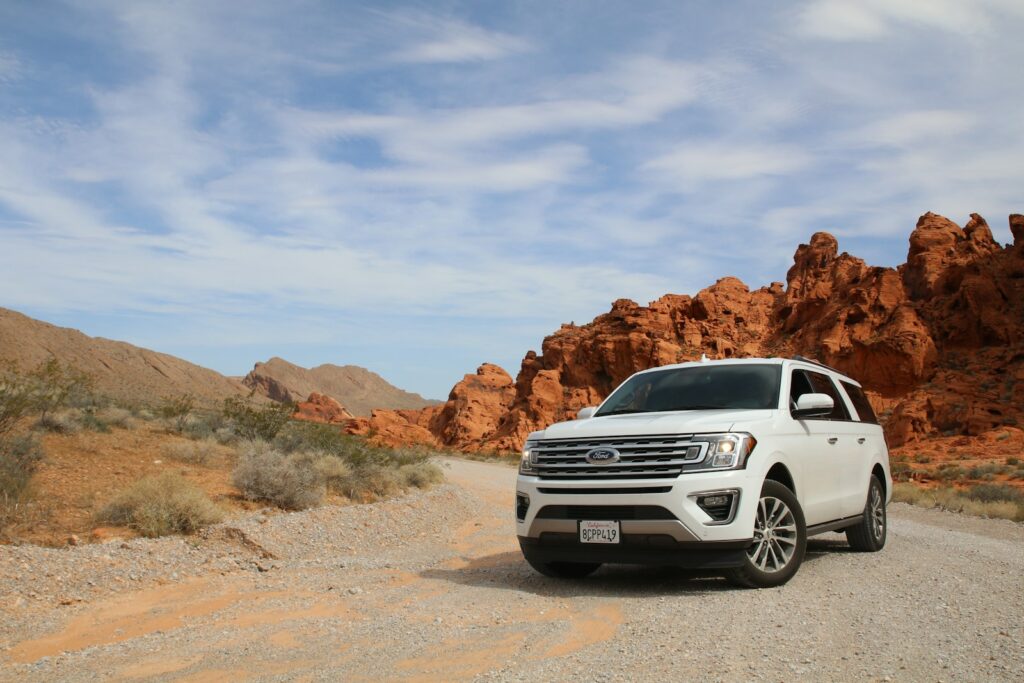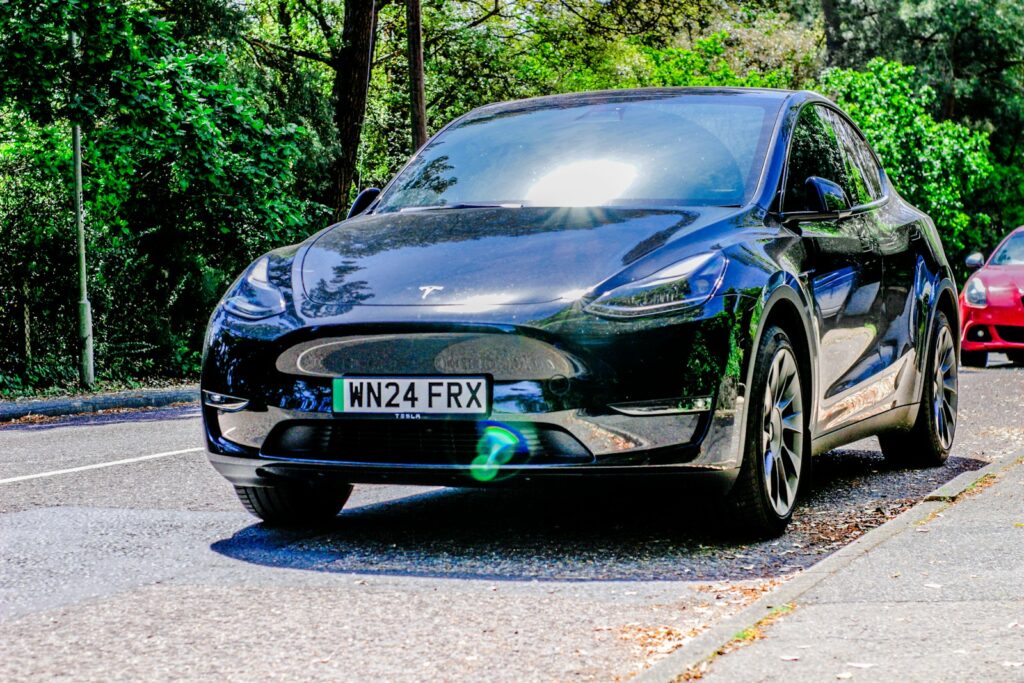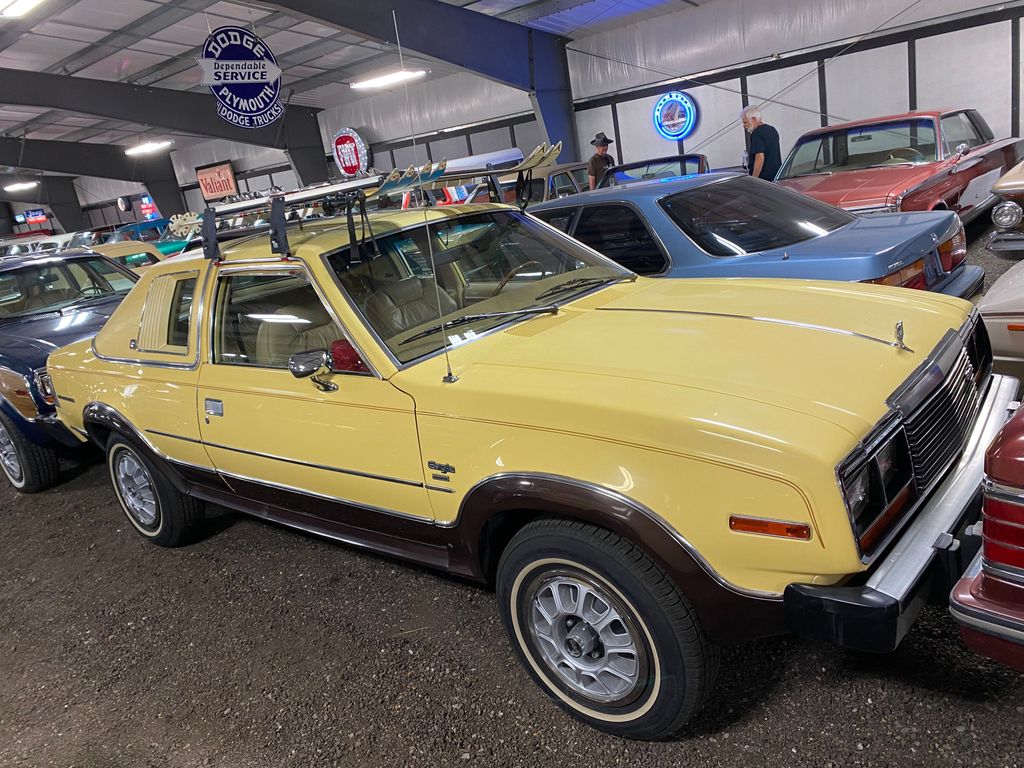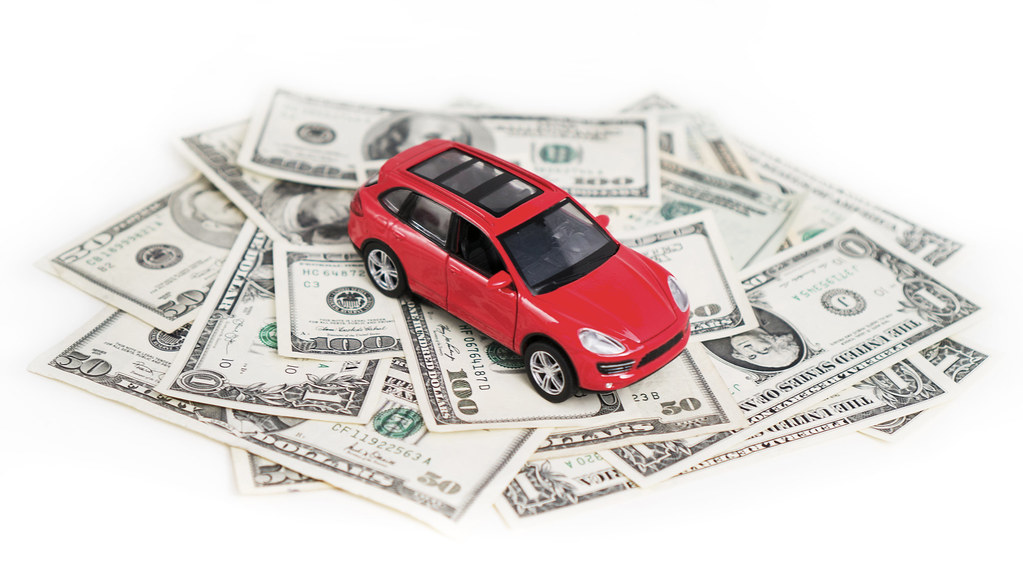
Buying a car, whether it’s your very first or simply your next, is undeniably one of life’s more significant purchases. It’s an exciting milestone, a moment brimming with the promise of newfound freedom and convenience. Yet, beneath the shiny allure of a new set of wheels lies a labyrinth of potential pitfalls, high-pressure tactics, and subtle deceptions designed to separate you from your hard-earned cash. It’s no wonder many people drive away from the dealership feeling like they’ve been taken for a ride, and not in the way they intended.
Indeed, inexperienced buyers can cost themselves thousands of dollars with just a simple mistake or two. Dealerships and salespeople, after all, are in the business of maximizing their profit, often employing trickery and shenanigans to confuse customers. However, in many cases, consumers themselves are their own worst enemy, making common mistakes that hurt their ability to get the best possible deal. The key to success? Being informed, prepared, and ready to tackle these challenges head-on.
This guide is designed to empower you with concrete, actionable advice, turning potential headaches into strategic advantages. We’re here to identify those common issues, mistakes, and inefficiencies, offering clear, practical solutions that you can implement immediately. Our goal is to help you optimize every aspect of your car-buying journey, ensuring you drive away with confidence, knowing you secured the smartest deal possible.

1. **Skipping Comprehensive Research (Not Doing Your Homework)**One of the single biggest mistakes people make when buying a vehicle is not doing their homework before even stepping foot on a car dealership lot. It’s easy to get caught up in the excitement of browsing, but without prior knowledge, you’re essentially walking into a chess game without knowing the rules. This oversight can set you back significantly before any real negotiations even begin, leaving you vulnerable to whatever narrative a salesperson chooses to present.
Thanks to the internet, it’s never been easier to be an informed buyer. With just a few clicks, you can easily see what cars you’re interested in are selling for, based on factors like mileage and condition. This essential information helps you form a realistic price range in your mind, set a concrete budget, and decide on a maximum price you are genuinely willing to pay. Knowledge, as they say, is power, and there’s never been more knowledge readily available at your fingertips.
Your research shouldn’t stop at just car models and prices. You need to explore dealer websites, review sites, and online marketplaces to discover vehicle reviews, customer experiences, dealer reputations, financing options, and special sales. Don’t simply stop at the closest dealer or one recommended by friends or social media; cast a wide net. Take the time to make phone calls and get around to several dealers to truly compare your options.
Failing to research the vehicle thoroughly is one of the riskiest car-buying mistakes. Buying a car based solely on looks or brand reputation ignores critical factors such as vehicle history, consumer reviews, reliability scores, and resale value. This is especially crucial in today’s market, where technology integration, from advanced driver-assistance systems (ADAS) to infotainment and EV range, plays a significant role in a car’s overall value and your satisfaction. Tools like Edmunds.com, Kelley Blue Book (KBB), Consumer Reports, and even YouTube long-term reviews are invaluable resources in this phase.
2. **Fixating on Monthly Payments & Ignoring Total Cost**Salespeople are masters of psychological tactics, and one of their most effective ploys is to shift your focus from the total price of a car to the manageable monthly payment. You’ll hear lines like, “If I can get you into this car for $400 a month, would that work for you?” Of course, it would! This clever framing makes a large purchase seem affordable, but it’s a trap designed to obscure the true cost of the vehicle over time.
When you’re solely focused on that attractive monthly figure, you often overlook critical details: the extended length of the payment plan, the interest rate you’ll be charged, and how much more money you’ve actually spent once the car is fully paid off. A car salesperson can, in fact, get you almost any monthly payment you want. All they have to do is extend the length of the car loan and potentially raise the interest rate, leading you to pay significantly more – sometimes $50,000 or more for a vehicle initially priced at $40,000.
One of the most common car-buying mistakes is entering the market without a solid, realistic budget. Many buyers concentrate only on the monthly payments without considering the comprehensive total cost of ownership. This includes not just the purchase price and loan interest, but also insurance premiums (which can average $1,200–$1,800 annually), maintenance costs ($500–$1,000 per year), registration fees, and taxes. Overlooking these recurring expenses can lead to significant financial strain down the road.
First-time car buyers are often lured by longer financing terms, enticingly low monthly payments, or appealing zero-down-payment offers. While these might seem like immediate benefits, they effectively mask the true financial burden of the car. Beyond the car payments and interest, remember that full-coverage car insurance is typically required if the vehicle is financed. Moreover, regular refueling, scheduled maintenance, and unexpected repairs can easily double a seemingly “low monthly payment.” Often, the first auxiliary cost to be cut is scheduled maintenance, which only leads to higher expenses, increased repair costs, poor fuel economy, higher depreciation, and lower resale value in the long run. Creating a full-cost breakdown *before* visiting a dealership is a non-negotiable step to financial sanity.

3. **Neglecting Pre-Approval and Smart Financing**Auto finance is one of the most critical areas when buying your first car, and it’s also where a significant amount of fraud and deception can occur within the dealership’s finance department. This is a place where thousands of dollars in excessive charges can quietly slip into your contract if you’re not vigilant. The adage “Cash is King” holds significant weight in the car business, meaning a larger down payment creates equity and lessens the lender’s risk, often translating to better loan terms for you.
One major car-buying mistake is skipping the pre-approval process. Digital lenders and fintech platforms have made it easier than ever to get pre-approved for a car loan from the comfort of your home. Without a pre-approved loan in hand, buyers often find themselves vulnerable to high dealer markups, inflated interest rates, and unnecessary financing packages. Pre-approval arms you with negotiating power, helps you stay firmly within your budget, and acts as a crucial shield against dealership upselling tricks.
It’s far smarter to proactively look into financing options with local banks or your credit union before you even step onto the car lot. Better yet, secure a pre-approval for a car loan. This way, you’ll know exactly how much you can afford to spend on a car, and you’ll immediately be able to tell if the dealer can genuinely offer you a better deal on the interest rate. Platforms like LightStream, Capital One Auto Navigator, or Credit Karma can be invaluable for comparing loan offers and finding the best rates available to you.
To get pre-approved, you’ll first need to check your credit score and credit report. Next, determine your budget, and don’t forget to consider how many months you’re willing to commit to paying a car loan. It’s wise to check with multiple lenders before making a decision, but try to do so within a short period of time. This is because each prospective lender may perform a “hard pull” on your credit report, which could temporarily impact your overall credit rating. While there’s nothing wrong with accepting the dealership’s financing if it genuinely offers the best option (perhaps due to manufacturer incentives), always ensure you’re armed with all the necessary information before making that final decision.
Accepting long-term financing, like 72 months versus a more standard 36 months, is another common trap. While it lowers your monthly payments, it significantly increases the overall cost of the car. For example, a $25,000 loan paid at 7.0% interest over 36 months would cost a total of $27,789. However, the same loan stretched over 72 months would balloon to $30,688, nearly $3,000 more. To secure the best overall deal, consider making a bigger down payment or, even better, buying a less expensive car that fits comfortably within a shorter finance term. Understanding your auto finance contract line-by-line is a crucial final step; don’t let vigilance waver at the signing table.

4. **Failing to Negotiate the Overall Deal**Many customers transform into timid individuals the moment they set foot on a car lot, seemingly forgetting that they possess the power to negotiate the terms of their vehicle purchase. A car dealership is no place for shyness; everything, from the tires to the paint color and the interior fabric, is negotiable. So too is the price, the interest rate charged, and the length of a lease or finance plan. The truth is, it can all be negotiated, but people need to be willing to do the negotiating.
Many sales folks like to begin their pitch by claiming they “don’t really negotiate.” This is, quite simply, baloney. If you hear anyone utter this phrase, you should politely turn and walk out the door. The belief that you can’t negotiate remains one of the most expensive car-buying mistakes, especially in today’s market, where even online platforms often offer room for negotiation if you compare listings and provide evidence of better offers.
Effective negotiation extends beyond just the sticker price. Savvy buyers understand that negotiation areas include MSRP discounts, dealer incentives, adjustments to your trade-in value, and various add-ons like floor mats or window tinting. By having a clear understanding of these different facets, you can approach the discussion holistically and ensure you’re getting value at every turn, not just on the headline price.
Agreeing to a low trade-in value is another common tactic employed by car salespeople, often referred to as the “sucker test.” They start by offering a ridiculously low value for your current car, gauging your reaction. As the conversation progresses, they might gradually, and often slowly, raise the amount they’re willing to offer. This creates a psychological effect where you feel like you’re winning the negotiation and getting more for your car. In reality, the starting offer was so low that you’re still getting ripped off. Do yourself a favor and sell your own car privately; the convenience of simply trading it in will almost never be worth the money it costs you.
Read more about: In the Boardroom: Decoding 15 Critical Control Mechanisms for Auto Executives in Joint Ventures and Venture Deals

5. **Falling for Unnecessary Dealer Add-ons & Extended Warranties**Here’s a golden rule for car buying, and indeed for most major purchases: never buy an extended warranty under any circumstance. This isn’t just about vehicles; it applies to televisions, video game consoles, or any other gadget. Most retail outlets will find a reason in the fine print not to honor an extended warranty if you ever need to use it, and most regular manufacturer warranties are usually sufficient for new vehicles. Yet, extended warranties are particularly popular among second-hand, pre-owned, or used cars, where dealerships and salespeople eagerly try to sell them for everything from the engine and transmission to the radio and tires. Don’t be fooled; these cost a lot of money with no real guarantee of providing protection should something go wrong. Even new cars with extended warranties on infotainment systems or DVD players are best avoided, as these too are costs best not incurred.
Similar to unnecessary fees, car dealerships are adept at piling on unnecessary extras that serve to inflate the final price of your car. Take rustproofing, for example. Every vehicle manufactured today boasts excellent rustproofing, with most cars being undercoated directly at the factory. However, this fact hasn’t deterred many car dealerships from attempting to sell rustproofing as an “option.” People, understandably concerned about protecting their new, expensive purchase, are often tricked into paying hundreds, sometimes upwards of $1,200, for this completely fabricated and unnecessary service.
Do yourself a favor and just say “no” to any and all extra options presented by the dealership. Keep in mind that if you genuinely desire rustproofing, it typically costs around $200 at an independent garage, a stark contrast to dealer pricing. Furthermore, almost any other aftermarket upgrade, such as tinted windows or floor mats, can be obtained significantly cheaper outside the dealership. The mark-up on these so-called “options” is often outrageous, designed solely to boost the dealer’s profit margins, not your vehicle’s value.
Falling for these high-margin extras is a classic car-buying mistake. Common add-ons to avoid include paint protection, which can cost $500 or more and is usually unnecessary given modern paint finishes. VIN etching, often priced around $200, can typically be done for free or at a minimal cost elsewhere. And, as mentioned, extended warranties are frequently overpriced and often overlap with existing manufacturer coverage. As a proactive measure, decline all extras during the sales process. Then, take the time to research and add only what you truly need after the purchase, and do so from a trusted third-party provider.
Read more about: Why Your Dream Truck Is Costing You Thousands More: An In-Depth Guide to Unmasking Hidden Dealership Fees and Markups

6. **Succumbing to Pressure and Manipulation**The car-buying process, particularly for the inexperienced, is frequently marked by high-pressure sales tactics that often lead to costly decisions. It’s a stressful experience, even for the most seasoned consumer. Salespeople at dealerships or used car lots are trained to extract as much money as possible, and this frequently involves trickery and shenanigans designed to confuse people and loosen the contents of their wallets. It’s no surprise that many people drive off a car lot feeling as though they have been taken advantage of.
One classic manipulation technique is the “good cop, bad cop” routine, often adapted as the “good salesperson, bad manager” shtick. In this scenario, the salesperson attempts to present themselves as your trusted, honest broker, trying their best to get you a great deal. However, they lament that their manager is an unyielding “hard ass.” The salesperson will repeatedly go to the back to “run the deal by his or her manager,” leaving you waiting for extended periods, only to return with a “no go” and a slightly more expensive counter-offer. This entire routine is a bunch of malarkey; chances are, they’re just pouring themselves another cup of coffee.
Less reputable sellers and dealers can often sense a first-time buyer the moment they walk in, instantly escalating the pressure to purchase a car they might not be able to afford or that doesn’t fit their needs. Be alert for common pressure tactics, such as, “This deal is only good, today,” or “What’s it going to take to get you in this car, tonight?” Instead, seek out a salesperson who genuinely addresses your needs with questions like, “What are you looking for in a car?” or statements like, “Let’s look for something in your budget.” If you feel pressured, no matter how much you think you like the car, be prepared to walk away.
Remember, you’re making a major purchase that can affect you financially for years to come. There is absolutely nothing wrong with taking some time to “sleep on it.” In fact, expressing some hesitation may even lead to a better offer later on. If the pressure becomes overwhelming, it’s always best to walk away. Furthermore, never buy from a salesperson you don’t trust. If a dealer employee makes you feel uneasy for any reason – if they’re too pushy, seem uninformed, or pressure you into an uncomfortable deal – simply leave. Look for someone who listens well, answers your questions directly, and can demonstrate the car’s features to match you with the right vehicle. Establishing rapport can make the entire process much smoother.
Read more about: Joe Rogan’s Stark Warning to MAGA: Unpacking the Kimmel Controversy, Free Speech, and the Future of Political Discourse
7. **Handing Over a Credit Card Prematurely**Perhaps one of the most audacious and effective psychological ploys employed by car salespeople is asking you, upfront, for your credit card. They then take your credit card to the back office and don’t return with it, holding onto it throughout the entire negotiation process. This tactic immediately puts you on the defensive; you start to feel that you need to make a deal right away simply to retrieve your credit card. A sense of unease creeps in as you wonder what they intend to do with it.
After a while, the feeling of being held hostage begins to set in, and that, precisely, is the point. The sales staff wants you to feel trapped and believe that you must negotiate with them, regardless of your comfort level. Taking your credit card is a calculated way for salespeople to ratchet up the pressure on you, creating a scenario where you might start to feel like you’ve already bought the car, and the only remaining question is how much money you’ll be paying.
Let’s be crystal clear: First, you should never, under any circumstances, give anybody your credit card unnecessarily. Second, you are absolutely not obligated to give anyone your credit card, especially not a car salesperson, before a deal is finalized. Third, even if a car dealership has possession of your credit card, it would be illegal for them to charge anything to it without your explicit permission or to refuse to return it if you ask for it. So, relax and understand your rights.
Recognize that you have far more power in the car-buying negotiation than you might realize. This particular tactic is an attempt to disarm you and make you feel committed when you are not. The most powerful word in your vocabulary during this process is “no.” Use it freely, assertively, and without apology. By refusing to surrender your credit card prematurely, you maintain control and signal that you are a serious, but not easily manipulated, buyer.
Now that you’ve mastered the art of preparation and initial negotiation, it’s time to shift our focus to the actual vehicle and the final stages of the purchase. The second half of your car-buying journey is just as critical, full of its own set of unique challenges and opportunities for savings. From thoroughly evaluating your potential ride to understanding the intricate dance of final paperwork and hidden costs, staying vigilant here can solidify a great deal.
Evaluating the vehicle, avoiding emotional traps, and understanding final purchase considerations can truly make or break your experience. We’re diving into the hands-on inspection, the strategic test drive, and the often-overlooked financial nuances that can protect your investment and ensure you drive away not just with a car, but with the *right* car at the *right* price. Let’s explore the final common missteps that can trip up even the most diligent first-time buyers.

8. **Not Thoroughly Inspecting the Vehicle (Especially Used)**Imagine picking out your dream car, falling in love with its sleek lines and comfortable interior, only to discover a costly hidden mechanical issue weeks later. This scenario is far too common when buyers skip a thorough inspection, especially with used vehicles. Relying solely on a car’s appearance or a quick spin around the block is a gamble, and the stakes are your hard-earned money and future peace of mind.
Even if you consider yourself mechanically inclined, the advanced technology in today’s cars makes a DIY inspection increasingly complex. What looks good on the surface might be masking underlying problems with the engine, transmission, or intricate electronic systems that only a professional can properly diagnose. This is why enlisting expert knowledge is a non-negotiable step in safeguarding your investment.
Always pay a certified and trusted mechanic to perform a pre-purchase inspection. This small upfront cost, typically ranging from $100–$150, can save you thousands by uncovering issues like frame damage, rust, or shoddy aftermarket wiring that aren’t apparent to the untrained eye. Even a Certified Pre-Owned (CPO) vehicle, while offering some assurances, warrants an independent second opinion. Ensure your chosen mechanic checks the engine, transmission, undercarriage, frame, brakes, tire condition, and performs a diagnostic scan.
9. **Inadequate Test Drives**A test drive is more than just a joyride; it’s a critical assessment of how a car fits into your daily life. Jack Gillis, former CEO of the Consumer Federation of America and author of The Car Book, rightly states, “Many of the complaints we get about cars could have been avoided with a good long test drive.” This isn’t just about feeling the engine’s power; it’s about evaluating comfort, functionality, and how the vehicle performs in your real-world scenarios.
Consider how you’ll use the car daily. Drive it on the highway to check cruising comfort and noise levels, maneuver it into tight parking spots, and simulate your typical commute. Pay attention to seat comfort, visibility (especially when backing up), and how easily a car seat might fit in the back, or if that third row is truly accessible for your needs. Bring a checklist of your must-have features and actively test them.
Modern cars are packed with technology that may be entirely new to you. During the test drive, make sure you’re comfortable with the infotainment system, advanced driver-assistance systems (ADAS), and any other high-tech features. Don’t hesitate to ask the salesperson for a detailed demonstration. This is your chance to sort out any discomfort or confusion before the purchase, not after you’ve already driven it home.
It’s also crucial to test-drive *the individual car* you intend to buy, not just a similar model. Even vehicles of the same year, make, and model can vary in ride quality, performance, and cabin noise. Furthermore, don’t stop at just one vehicle; test at least two or three competitors to benchmark performance and comfort. This comparative experience ensures you’re selecting the best fit for your preferences and needs, not just settling for the first option.
Read more about: Dull Box Office Bombs and Critical Disasters: The Absolute Worst Films You Can Skip
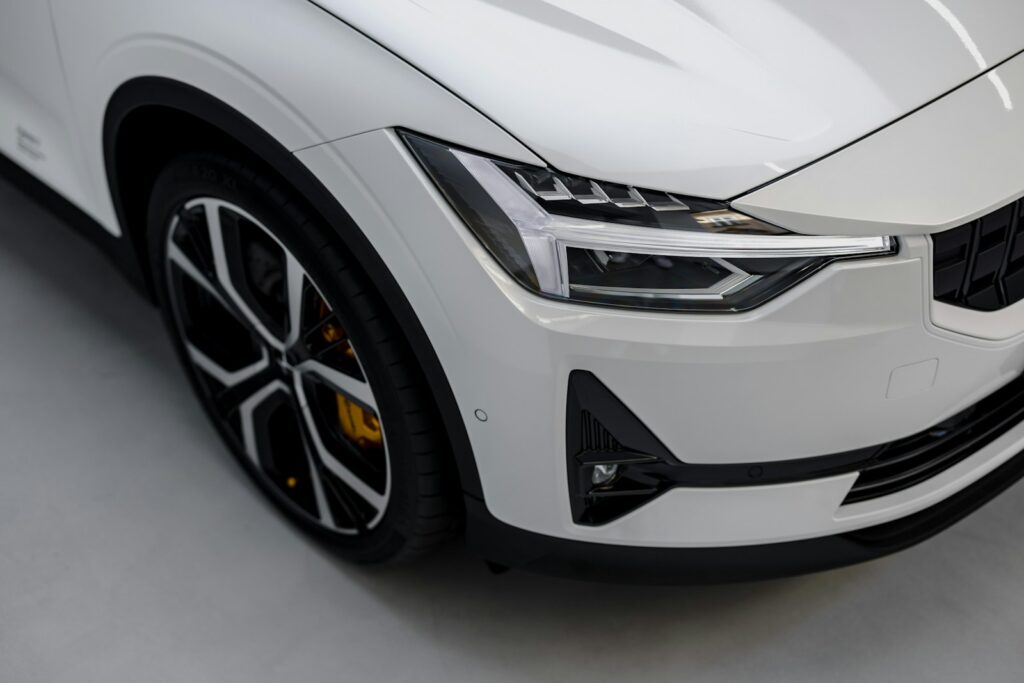
10. **Misunderstanding and Accepting Rebates**Rebates can seem like a golden ticket to a lower price, often dangled enticingly to draw you onto the lot. However, many first-time buyers make the mistake of misunderstanding their true nature. Salespeople frequently use rebates as leverage, claiming they can’t drop the price further but reassuring you that a significant sum will come back to you. This can be a cleverly disguised tactic that doesn’t always translate into real savings.
The reality is that rebates often originate directly from the vehicle manufacturer and typically apply regardless of the price you negotiate with the dealership. This means they are largely independent of the dealer’s specific selling price. When a salesperson factors in a rebate to “lower” your perceived cost, they may simply be pocketing potential discounts they could have offered on the vehicle’s actual sticker price.
The best strategy is to negotiate the car’s price as if no rebate exists. Strive for the lowest possible cash price or loan amount *before* even discussing any potential rebates. Once that deal is solidified, then inquire about and claim any applicable manufacturer rebates. This approach ensures you’re maximizing your savings and not allowing the rebate to be used as a distraction to inflate the actual vehicle cost. Don’t let the promise of future money obscure the immediate opportunity for a better price.
Read more about: Beyond the Sticker Price: Unveiling How Car Dealers Secretly Add Thousands to Every Sale Through Financing and Hidden Charges

11. **Paying Exorbitant Administration/Processing Fees**Few fees are as frustrating and unnecessary as the ubiquitous “administration fee,” sometimes called a “processing fee” or “documentation fee.” Car dealerships often pass these onto customers, charging anywhere from $400 to $500 for the supposed administrative work of processing your paperwork. This practice is, frankly, an insult to the customer’s intelligence and wallet.
The work of processing paperwork is an inherent part of selling a car; it would need to be done regardless of who buys the vehicle. The sole beneficiary of this “administrative work” is the dealership itself, yet they attempt to pawn off this basic cost of doing business onto you. It’s an outrageous sum for a task that is entirely in their interest and responsibility.
Many salespeople will try to tell you that these charges are non-negotiable, boilerplate fees. Do not believe them. These fees are absolutely negotiable, and your goal should be to negotiate them down to zero. By understanding that these are inflated profit centers for the dealership, you can confidently push back. Stand firm, explain that you will not pay for their cost of doing business, and be prepared to walk away if they insist. This vigilance alone can save you hundreds of dollars on the final bill.

12. **Assuming the Dealer Holds All the Cards (Ignoring F&I)**You’ve battled through negotiations on the vehicle price, trade-in, and financing, feeling victorious. Then you’re ushered into the Finance & Insurance (F&I) office, often seen as the final, perfunctory step. This is a crucial mistake. The F&I office is not merely where verbal promises are formalized; it’s a cunningly designed arena for a dealership to introduce a whole new suite of profit-driving products and services.
This is where extended warranties, gap insurance, paint protection, VIN etching, and various other add-ons are aggressively pitched. While some of these products *might* have value depending on your specific situation, they are almost always presented at inflated prices, and many overlap with existing manufacturer coverage or can be obtained cheaper elsewhere. The F&I manager is highly skilled at making these seem like essential protections, often preying on your fatigue or desire to just “get it over with.”
Entering the F&I office unprepared is akin to stepping back into the negotiation ring blindfolded. Just as you researched vehicles and financing, you should also research these ancillary products in advance. Know their typical costs, what they cover, and if you genuinely need them. Armed with this knowledge, you can negotiate their prices, decline them entirely, or opt to purchase them from a third-party provider after the sale. Scrutinize every line of the final contract to ensure no extra charges or unwanted products have quietly slipped in.

13. **Falling into the “New is Better” Trap & “Love at First Sight” (Ignoring Practical Needs)**For many first-time car buyers, the allure of a brand-new vehicle is irresistible. The “new is better” mindset, however, often overlooks significant financial realities. New cars are considerably more expensive, suffer from rapid first-year depreciation (often 20-30% of their value), and typically require higher insurance coverage. This initial enthusiasm can quickly become an expensive burden.
Used cars, in contrast, often represent a smarter financial choice, especially for a first-time buyer. They’ve already undergone their steepest depreciation, making them less expensive to purchase, insure, and repair. With modern manufacturing advancements and better maintenance practices, many used cars, even those with 60,000 or 100,000 miles, can reliably last up to 200,000 miles or more. Considering the average driver puts on about 11,500 miles per year, a 100,000-mile used car could easily provide another 8 years of dependable driving.
Beyond the new-versus-used debate, buyers frequently fall into the “love at first sight” trap. They become fixated on a car’s looks, performance, or specific options, neglecting their actual practical needs. A sleek sports car might be thrilling, but if you need a reliable commuter or family vehicle, it could prove impractical and financially unsustainable. Similarly, an SUV might appeal, but its cost to finance, insure, and fuel could strain your budget.
To avoid these emotional pitfalls, begin by clearly defining your real needs: daily commute, passenger capacity, cargo space, fuel efficiency, and budget. Prioritize these practical requirements over aesthetic desires or fleeting performance fantasies. If a powerful sound system is a must-have, remember it’s often cheaper to upgrade a less expensive car than to buy a premium model with one built-in. Bringing a level-headed friend along can also provide a valuable objective perspective, ensuring your decision is based on logic, not just emotion.
14. **Overlooking Available Incentives and Tax Credits**In the excitement of buying a car, many first-time buyers completely overlook a significant opportunity for savings: available incentives and tax credits. These often-untapped financial benefits, which can apply to electric vehicles (EVs), hybrids, and even some traditional gasoline cars, could save you thousands of dollars if you know where to look. Ignoring them is a costly financial mistake that should be avoided at all costs.
These incentives come in various forms and from multiple sources. You might qualify for federal EV tax credits, such as the potential $7,500 for eligible electric vehicles. States also offer their own clean vehicle rebates, with examples like California’s $2,000 program. Beyond government initiatives, manufacturers frequently provide their own special offers, like loyalty discounts for returning customers or military discounts, often amounting to $500 or more.
The key to unlocking these savings lies in proactive research. Before you finalize any purchase, investigate all potential federal, state, and manufacturer incentives for the specific make and model you are considering. Don’t rely on the dealership to volunteer this information; while a good dealer will, it’s ultimately your responsibility to be informed. Ask direct questions about any applicable tax credits, rebates, or special programs. Combining this knowledge with smart financing and careful negotiation ensures you’re not leaving any money on the table.
### Your Road to Smart Car Ownership Starts Now
Navigating the car-buying landscape might seem like a maze, especially for first-time buyers. However, by understanding and proactively avoiding these 14 common mistakes, you’re not just buying a car; you’re investing in a smarter, more confident future on the road. From meticulous research and shrewd negotiation to vigilant inspection and leveraging every available saving, each step you take with informed intent empowers you.
Read more about: Mechanics Explain: Why 12 ‘Game-Changing’ EVs Are Stalling in the U.S. Market
The journey to finding the right car at the right price doesn’t have to be fraught with anxiety. With the actionable advice we’ve shared, you are now forearmed, ready to anticipate dealer tactics and sidestep common buyer oversights. Drive away knowing you secured the best deal possible, not just for the vehicle itself, but for your peace of mind and financial well-being. Embrace the process, stay sharp, and enjoy the open road ahead with the confidence of a truly savvy car owner.



